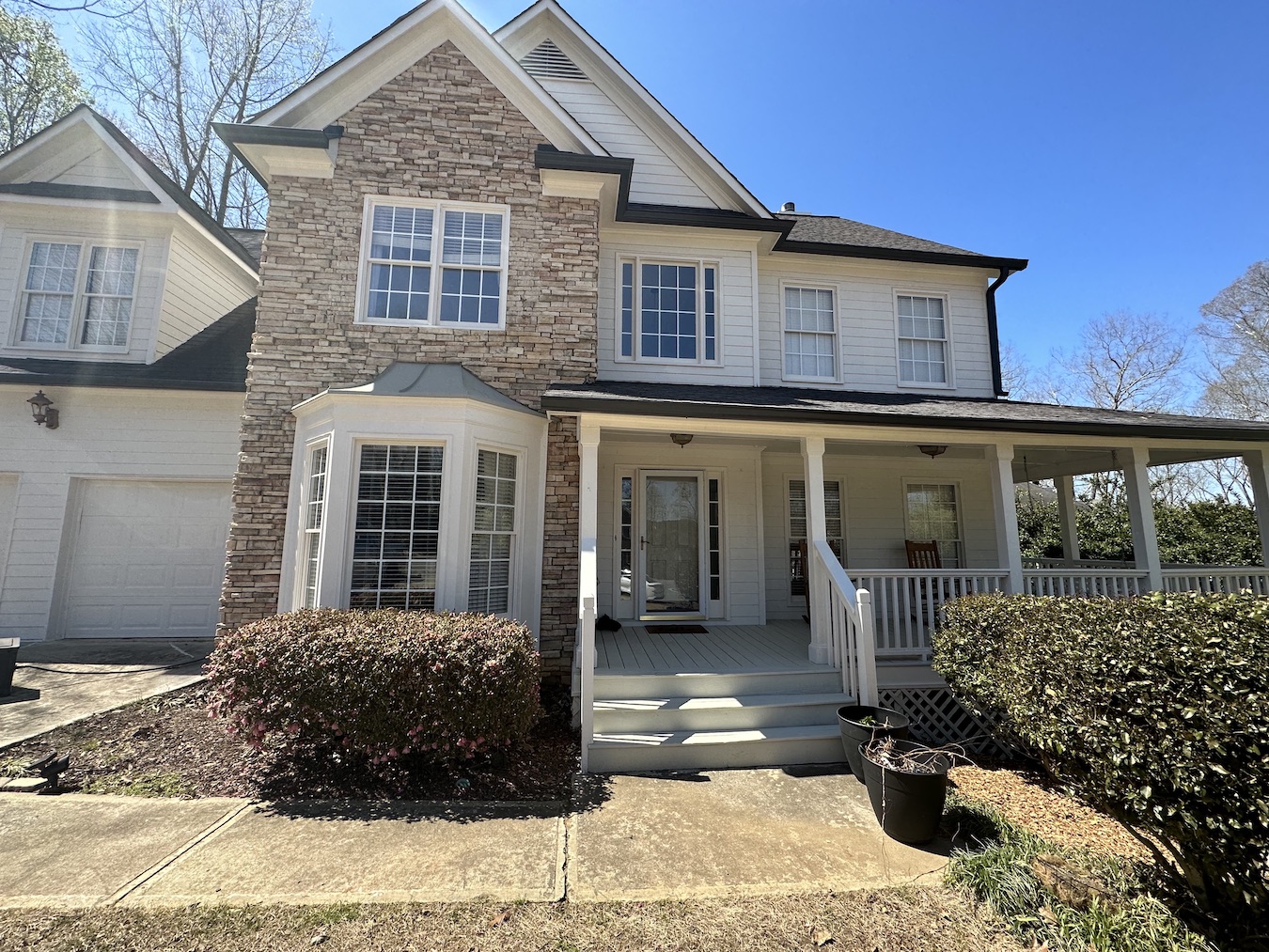
Revamping the exterior of your Metro Atlanta home with Fillo Painting & Exteriors? Choosing the right finish for surfaces like decks, fences, and siding is crucial. In our detailed guide, we’ll explore the differences between paint and solid stain, key techniques, and which surfaces are best suited for each option. Our experts delve into the benefits, drawbacks, durability, and aesthetics of both, ensuring you make an informed decision for your home’s exterior. From wood siding to outdoor furniture, learn how to elevate your home’s curb appeal with Fillo Painting & Exteriors.
Paint:
Paint is a versatile option suitable for a wide range of exterior surfaces, including wood, metal, concrete, and masonry. Its opaque nature provides excellent coverage, making it ideal for hiding imperfections and achieving a uniform finish. Paint is commonly used on surfaces such as:
Wood Siding:
Paint is commonly used on wood siding due to its ability to provide a protective barrier against moisture, UV rays, and harsh weather conditions. It can help extend the lifespan of the wood and offers a wide range of color options to match any architectural style.
Fiber Cement Siding:
Fiber cement siding, which mimics the look of wood but requires less maintenance, can also benefit from paint. Paint helps enhance the curb appeal of fiber cement siding while providing long-lasting protection against the elements.
Metal Siding:
Paint is an ideal choice for metal siding, as it can prevent corrosion, rust, and fading caused by exposure to the elements. Additionally, paint offers versatility in terms of color options and finishes for metal siding.
Vinyl Siding:
While vinyl siding is often manufactured in pre-finished colors, some homeowners may choose to paint it to refresh or change the color. Paint can adhere well to vinyl siding if properly prepared, but it’s essential to select a paint formulated for use on vinyl and to follow manufacturer recommendations.
Trim and Accents:
Paint adds a pop of color to trim, doors, shutters, and other architectural details, enhancing the overall aesthetic appeal of your home.
Metal Surfaces:
Paint can prevent corrosion and rust on metal surfaces such as railings, gates, and gutters, prolonging their durability and lifespan.
Concrete and Masonry:
Paint can revitalize concrete patios, porches, and walkways, providing a durable and weather-resistant finish.
While paint offers numerous benefits, it may not be the best choice for all exterior surfaces. For instance, on horizontal surfaces like decks or porches, paint may be prone to peeling and chipping over time, especially in high-traffic areas.
Solid Stain:
Solid stain is an excellent alternative to paint, particularly for wooden surfaces. It penetrates the wood fibers, enhancing its natural grain while providing a rich, opaque color. Solid stain is commonly used on surfaces such as:
Decks and Porches:
Solid stain offers superior durability and weather resistance compared to paint, making it an ideal choice for horizontal surfaces exposed to heavy foot traffic and the elements.
Wooden Fences:
Solid stain can protect wooden fences from moisture, UV damage, and rot, while still allowing the natural beauty of the wood to shine through.
Wood Siding:
Solid stain is particularly well-suited for wood siding due to its ability to penetrate the wood fibers and enhance the natural grain while providing a durable, opaque color. It offers superior protection against moisture, UV damage, and rot compared to paint, making it an excellent choice for wood siding in climates with high humidity or exposure to harsh elements.
Cedar Siding:
Cedar siding, known for its natural beauty and durability, can benefit from solid stain to protect it from weathering while maintaining its rustic charm. Solid stain allows the natural characteristics of cedar, such as knots and grain patterns, to show through while providing long-lasting protection.
Redwood Siding:
Similar to cedar siding, redwood siding can be enhanced and protected with solid stain. Solid stain helps preserve the rich color and texture of redwood while offering excellent resistance against moisture and UV damage.
Pressure-Treated Wood Siding:
Pressure-treated wood siding, which is treated with preservatives to resist decay and insect damage, can benefit from solid stain to enhance its appearance and prolong its lifespan. Solid stain provides a durable finish that complements the natural characteristics of pressure-treated wood.
Outdoor Furniture:
Solid stain can breathe new life into tired outdoor furniture, providing a durable and weather-resistant finish that withstands the rigors of outdoor use.
While solid stain excels in durability and natural aesthetics, it may not offer the same level of coverage or color options as paint. Additionally, it may not be suitable for non-porous surfaces like metal or concrete.
Conclusion:
With Fillo Painting & Exteriors, determining whether your home in Metro Atlanta has solid stain or paint can be relatively straightforward with a bit of observation, we’re here to make it seamless. If the coating appears opaque and uniform, it’s likely paint, whereas if the wood grain is visible, it’s likely solid stain. This comparison can help homeowners understand the differences, benefits, drawbacks, durability, and aesthetics of each option, aiding in future maintenance decisions. Ultimately, the choice between paint and solid stain for exterior surfaces in Metro Atlanta depends on factors such as surface material, desired aesthetics, and maintenance preferences, ensuring an informed decision that enhances the beauty and longevity of your home’s exterior.
